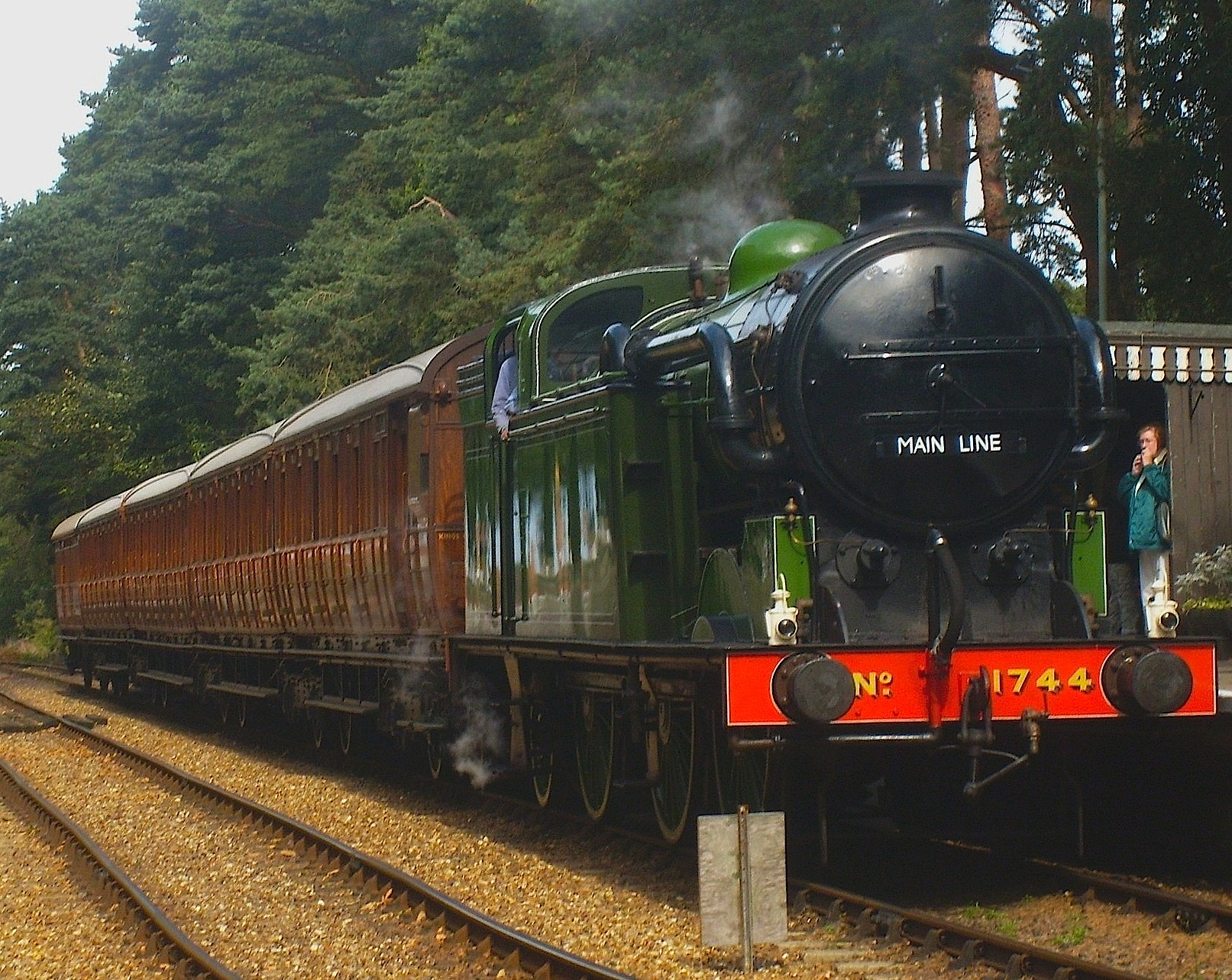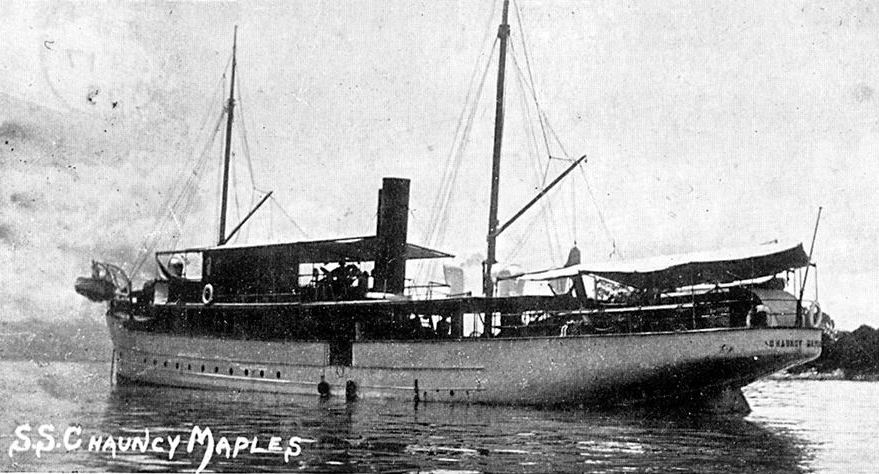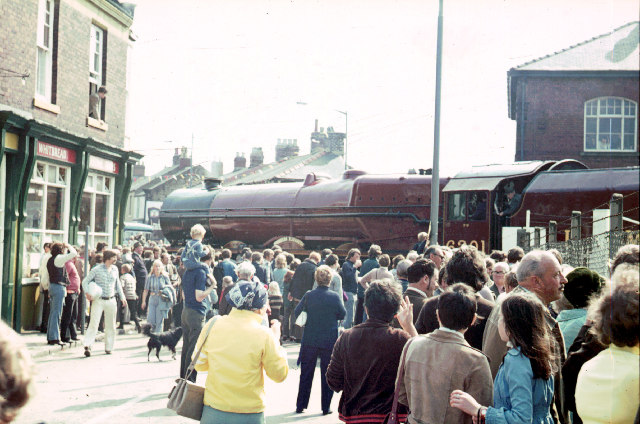|
LMS Stanier Class 5 4-6-0 4767
London Midland and Scottish Railway (LMS) Stanier Black Five, LMS number 4767, BR number 44767 is a preserved steam locomotive. In preservation it has carried the name ''George Stephenson'' though it never bore this in service with British Railways. Service 4767 was completed on the last day of the LMS, 31 December 1947 at Crewe Works. It was unique amongst the 842-strong class in that it featured outside Stephenson link motion in addition to other experimental features; a double chimney, Timken roller bearings throughout and electric lighting. These modifications were part of a series of experiments by George Ivatt to improve the already excellent William Stanier-designed Black Five. 4767 was renumbered 44767 by British Railways after nationalisation in 1948. Its double chimney was removed in 1953. It was withdrawn in December 1967 after a working life of only 20 years. Allocations 44767 was only transferred between sheds five times during its career with British Ra ... [...More Info...] [...Related Items...] OR: [Wikipedia] [Google] [Baidu] |
North Norfolk Railway
The North Norfolk Railway (NNR) – also known as the "Poppy Line" – is a heritage steam railway in Norfolk, England, running between the towns of Sheringham and Holt. The North Norfolk Railway is owned and operated as a public limited company, originally called Central Norfolk Enterprises Limited. The railway is listed as exempt from the UK Railways (Interoperability) Regulations 2000. History Route history The line once formed part of the Midland and Great Northern Joint Railway's Melton Constable to Cromer Beach branch line. The first section, from Melton to Holt, was opened on 1 October 1884. After a suspension of work, the Holt to Cromer section of line was completed by direct labour, and opened on 16 June 1887. A through Kings Cross to Cromer express started running in August 1887, and although the construction had been expensive, the boost to revenue from the new line was considerable. A second train was put on the following year, in the down direction cons ... [...More Info...] [...Related Items...] OR: [Wikipedia] [Google] [Baidu] |
Polmadie
Polmadie (; gd, Poll Mac Dè, lit=Son of God pool) is a primarily industrial area of Glasgow in Scotland. Situated south of the River Clyde, Polmadie is close to residential neighbourhoods including Govanhill (to the west) and Toryglen (south-east), with Oatlands and another large industrial zone at Shawfield to the north on the opposite side of major railway lines and the M74 motorway, Junction 1A of which serves the area. For over 50 years, the most prominent landmarks within Polmadie were the -high twin chimneys of a now disused waste incinerator plant operated by Glasgow City Council. This was replaced by a 'Recycling and Renewable Energy Centre' on the same site operated by Viridor with a less conspicuous stack. Also located in the area is Alstom's Polmadie Depot, a large railway maintenance facility for Avanti West Coast which is the most northerly train stabling and maintenance area on the West Coast Main Line (WCML), since the line runs through Polmadie on its final ... [...More Info...] [...Related Items...] OR: [Wikipedia] [Google] [Baidu] |
Jesse Rae
Jesse Rae (born 1951) is a Scottish singer and composer from St Boswells in Scotland. Career In the 1970s Rae moved to the US securing work as a runner in the New York Stock Exchange to fund his stay. Through work in Cleveland and Los Angeles studios, he became acquainted with several leading soul and funk artists, including Roger Troutman, Bernie Worrell, Nairobi Sailcat and Michael Hampton from the Parliament/Funkadelic enclave. Returning to the UK, he was unable to secure a recording contract despite offering several demos and his debut single "D.E.S.I.R.E." was latterly released via the Miami based TK Organisation. In 1981, he worked with Worrell as part of the P-Funk offshoot band, Space Cadets, whose sole album was released in the US in that year. Rae also spent a brief time with members of Granicus in a band called the Boys. Jesse can be heard on their album ''Thieves Liars and Traitors'' on a cut called "Taste of Love". He worked closely with Adrian Sherwood and t ... [...More Info...] [...Related Items...] OR: [Wikipedia] [Google] [Baidu] |
George Stephenson
George Stephenson (9 June 1781 – 12 August 1848) was a British civil engineer and mechanical engineer. Renowned as the "Father of Railways", Stephenson was considered by the Victorians a great example of diligent application and thirst for improvement. Self-help advocate Samuel Smiles particularly praised his achievements. His chosen rail gauge, sometimes called "Stephenson gauge", was the basis for the standard gauge used by most of the world's railways. Pioneered by Stephenson, rail transport was one of the most important technological inventions of the 19th century and a key component of the Industrial Revolution. Built by George and his son Robert's company Robert Stephenson and Company, the ''Locomotion'' No. 1 was the first steam locomotive to carry passengers on a public rail line, the Stockton and Darlington Railway in 1825. George also built the first public inter-city railway line in the world to use locomotives, the Liverpool and Manchester Railway, which opene ... [...More Info...] [...Related Items...] OR: [Wikipedia] [Google] [Baidu] |
William Whitelaw
William Stephen Ian Whitelaw, 1st Viscount Whitelaw, (28 June 1918 – 1 July 1999) was a British Conservative Party politician who served in a wide number of Cabinet positions, most notably as Home Secretary from 1979 to 1983 and as ''de facto'' Deputy Prime Minister of the United Kingdom from 1979 to 1988. He was Deputy Leader of the Conservative Party from 1975 to 1991. After the Conservative Party won an unexpected victory at the 1970 general election, Whitelaw was appointed as Leader of the House of Commons and Lord President of the Council by Prime Minister Edward Heath. After the suspension of the Stormont Parliament resulted in the imposition of direct rule, Whitelaw served as Secretary of State for Northern Ireland from 1972 to 1973. He also served under Heath as Secretary of State for Employment from 1973 to 1974 and as Chairman of the Conservative Party from 1974 to 1975. Whitelaw served Prime Minister Margaret Thatcher throughout her leadership of the Conser ... [...More Info...] [...Related Items...] OR: [Wikipedia] [Google] [Baidu] |
Secretary Of State For Northern Ireland
A secretary, administrative professional, administrative assistant, executive assistant, administrative officer, administrative support specialist, clerk, military assistant, management assistant, office secretary, or personal assistant is a white-collar worker person whose work consists of supporting management, including executives, using a variety of project management, communication, or organizational skills within the area of administration. There is a diverse array of work experiences attainable within the administrative support field, ranging between internship, entry-level, associate, junior, mid-senior, and senior level pay bands with positions in nearly every industry. However, this role should not be confused with the role of an executive secretary, cabinet secretary such as cabinet members who hold the title of "secretary," or company secretary, all which differ from an administrative assistant. The functions of a personal assistant may be entirely carried out to ... [...More Info...] [...Related Items...] OR: [Wikipedia] [Google] [Baidu] |
Shildon
Shildon is a town and civil parish in County Durham (district), County Durham, in England. The population taken at the 2011 Census was 9,976. The town has the Locomotion Museum, due to it having the first , built in 1825, and locomotive works on the Stockton and Darlington Railway. History The name Shildon comes from the Old English word ''sceld'', This translates as 'shelf shaped hill' or 'shield/refuge'. Another possibility is the Old English word ''syclfe'' meaning 'shelf' and the suffix ''duri'' meaning 'hill'. This refers to the town's location on a limestone escarpment.Shildon County Durham Conservation Area Prepared for Sedgefield Borough Council Conservation Area Character Appraisal December 2008 ''Report No: 0055/1-08'' Report by Archaeo-Environment Ltd The earliest inhabitants of the area were most likely present from the Mesolithic period some 6,000 years ago. Although no evidence of settlement has been found in Shildon itself a small Stone tool, flint tool dis ... [...More Info...] [...Related Items...] OR: [Wikipedia] [Google] [Baidu] |
Stockton And Darlington Railway
The Stockton and Darlington Railway (S&DR) was a railway company that operated in north-east England from 1825 to 1863. The world's first public railway to use steam locomotives, its first line connected collieries near Shildon with Darlington and Stockton-on-Tees in County Durham, and was officially opened on 27 September 1825. The movement of coal to ships rapidly became a lucrative business, and the line was soon extended to a new port at Middlesbrough. While coal waggons were hauled by steam locomotives from the start, passengers were carried in coaches drawn by horses until carriages hauled by steam locomotives were introduced in 1833. The S&DR was involved in the building of the East Coast Main Line between York and Darlington, but its main expansion was at Middlesbrough Docks and west into Weardale and east to Redcar. It suffered severe financial difficulties at the end of the 1840s and was nearly taken over by the York, Newcastle and Berwick Railway, before the ... [...More Info...] [...Related Items...] OR: [Wikipedia] [Google] [Baidu] |
Thornaby
Thornaby-on-Tees, commonly referred to as Thornaby, is a town and Civil parishes in England, civil parish on the River Tees's southern bank. It is in the Borough of Stockton-on-Tees, North Yorkshire, England. The parish had a population of 24,741 at the United Kingdom Census 2011, 2011 census, in the Teesside built-up area. The town had a municipal charter, royal charter enacted to form a municipal borough in 1892, during the Victorian era, before merging into the County Borough of Teesside in 1968. A borough status in the United Kingdom, borough no longer defines a specific settlement's status as a town in England since the Local Government Act 1972 reforms. The modern centre was built on the north eastern part of RAF Thornaby, Thornaby airfield and lies south-west of Stockton-on-Tees and south-west of Middlesbrough. History Prehistoric There are other signs of Thornaby being a much older settlement. Traces of prehistoric man have been found, the earliest being a stone a ... [...More Info...] [...Related Items...] OR: [Wikipedia] [Google] [Baidu] |
Carnforth
Carnforth is a market town and civil parish in the City of Lancaster in Lancashire, England, situated at the north-east end of Morecambe Bay. The parish of Carnforth had a population of 5,560 in the 2011 census, an increase from the 5,350 recorded in the 2001 census. The town is situated around 7 miles north of Lancaster, 17 miles south of Kendal, 40 miles east (bisected by Morecambe Bay) of Barrow-in-Furness and 28 miles northwest of Settle. The town is also close to the Cumbria/Lancashire border. Carnforth grew in the 19th century through the presence of the railway and ironworks. Due to the closeness of the coast and the hills, Carnforth is a popular base for walkers and cyclists exploring the area. The River Keer, the West Coast Main Line (WCML), the A6 and the Lancaster Canal pass through the town. The M6 motorway passes just to the east, linked to Carnforth by the A601(M). History The name "Carnforth" is thought to derive from its old function as a ford of the Riv ... [...More Info...] [...Related Items...] OR: [Wikipedia] [Google] [Baidu] |
Carlisle Kingmoor TMD
Carlisle Kingmoor TMD is a railway traction maintenance depot situated in Carlisle, England. The depot is operated by the Direct Rail Services (DRS). The depot was originally used to service diesel locomotives and diesel multiple units. The current depot code is KM. The original steam shed was called Carlisle (Kingmoor) and its shed code was originally 68A and later 12A. The current depot is located on the opposite side of the West Coast Main Line to the original steam shed and was officially opened on 1 January 1968. Under British Rail control, the depot closed in 1987 and lay derelict until 1998 when the site was taken over by DRS. Since then a number of developments have taken place with the installation of a sand tower and increased office space. Kingmoor marshalling yard is situated immediately to the north of the site. On 22 July 2017 DRS organised an open day at Carlisle Kingmoor TMD. During the open day, loco 66301 was named after the depot, receiving plates with the ... [...More Info...] [...Related Items...] OR: [Wikipedia] [Google] [Baidu] |
Carlisle
Carlisle ( , ; from xcb, Caer Luel) is a city that lies within the Northern England, Northern English county of Cumbria, south of the Anglo-Scottish border, Scottish border at the confluence of the rivers River Eden, Cumbria, Eden, River Caldew, Caldew and River Petteril, Petteril. It is the administrative centre of the City of Carlisle district which, (along with Cumbria County Council) will be replaced by Cumberland (district), Cumberland Council in April 2023. The city became an established settlement during the Roman Empire to serve forts on Hadrian's Wall. During the Middle Ages, the city was an important military stronghold due to its proximity to the Kingdom of Scotland. Carlisle Castle, still relatively intact, was built in 1092 by William II of England, William Rufus, served as a prison for Mary, Queen of Scots in 1568 and now houses the Duke of Lancaster's Regiment and the Border Regiment Museum. In the early 12th century, Henry I of England, Henry I allowed a pri ... [...More Info...] [...Related Items...] OR: [Wikipedia] [Google] [Baidu] |
.jpg)






.jpg)


